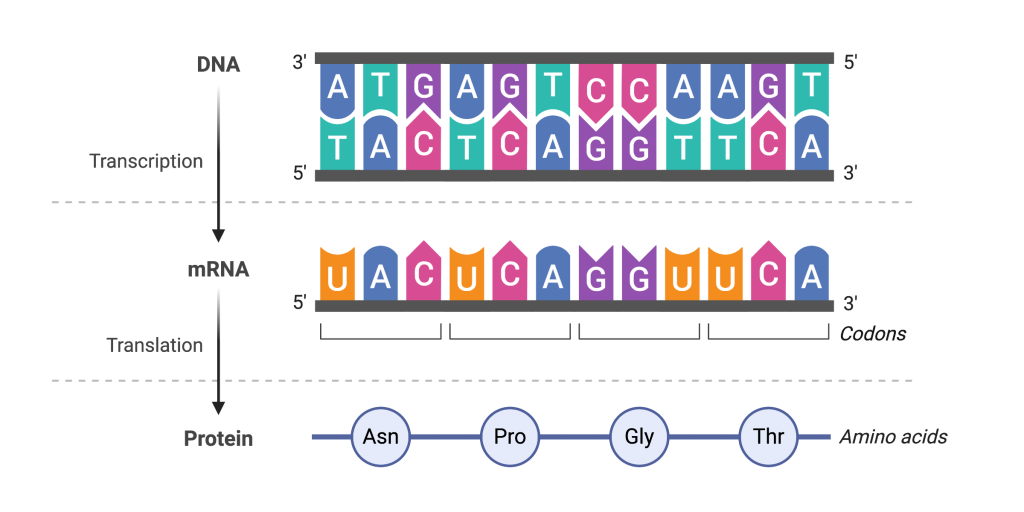13.1 The Central Dogma
The Central Dogma: DNA Encodes RNA; RNA Encodes Protein
The flow of genetic information in cells from DNA to mRNA to protein is described by the central dogma, which states that genes specify the sequence of mRNAs, which in turn specify the sequence of amino acids making up all proteins. Gene expression is the process of using information from a gene to make a functional product, such as a protein. Because the information stored in DNA is so central to cellular function, it makes sense that the cell would make mRNA copies of this information for protein synthesis, while keeping the DNA itself intact and protected.
Transcription, the copying of DNA to RNA is relatively straightforward in terms of information flow, with one nucleotide being added to the mRNA strand for every nucleotide read in the DNA strand. The translation to protein is a bit more complex because three mRNA nucleotides correspond to one amino acid in the polypeptide sequence. Nucleotides 1 to 3 correspond to amino acid 1, nucleotides 4 to 6 correspond to amino acid 2, and so on.

the process of making a functional product (usually refers to a protein) from information in a gene
process of making RNA from DNA
process of making a polypeptide (protein) from the information in RNA

